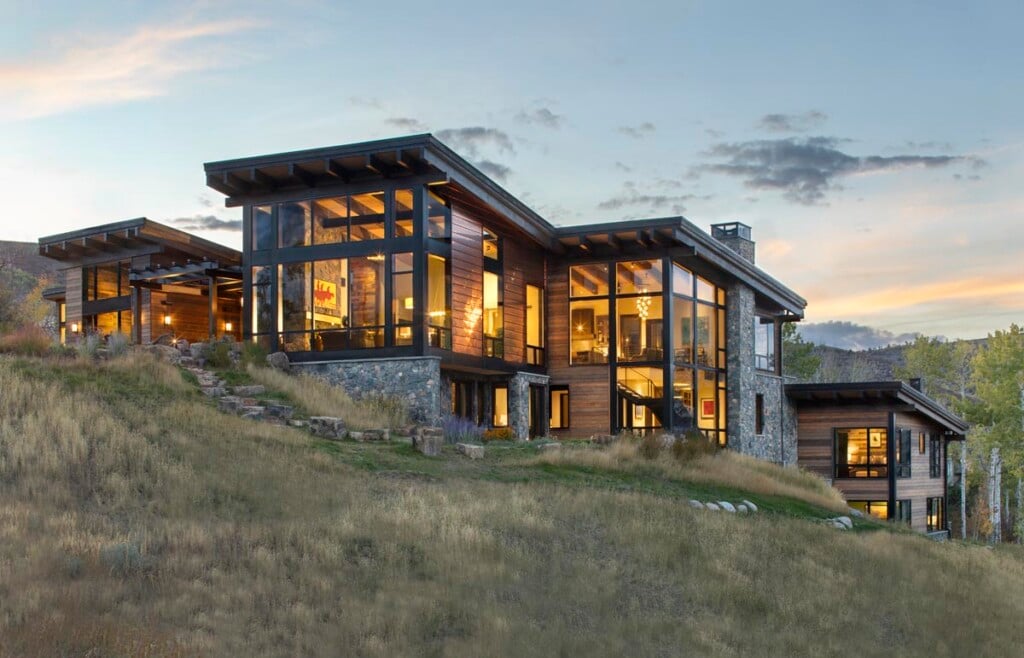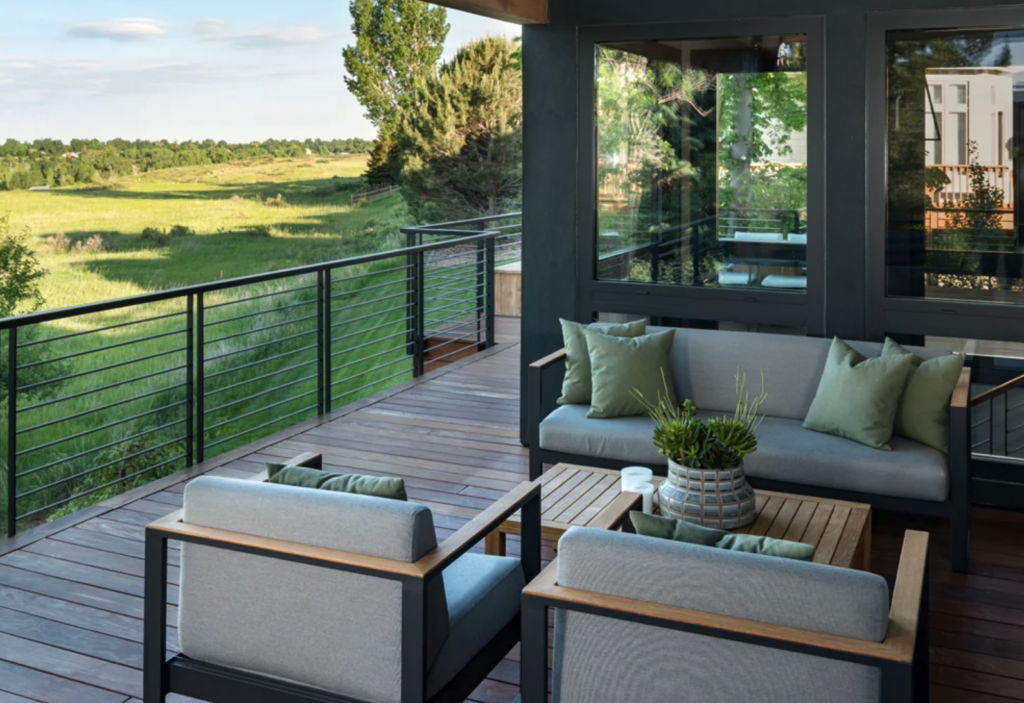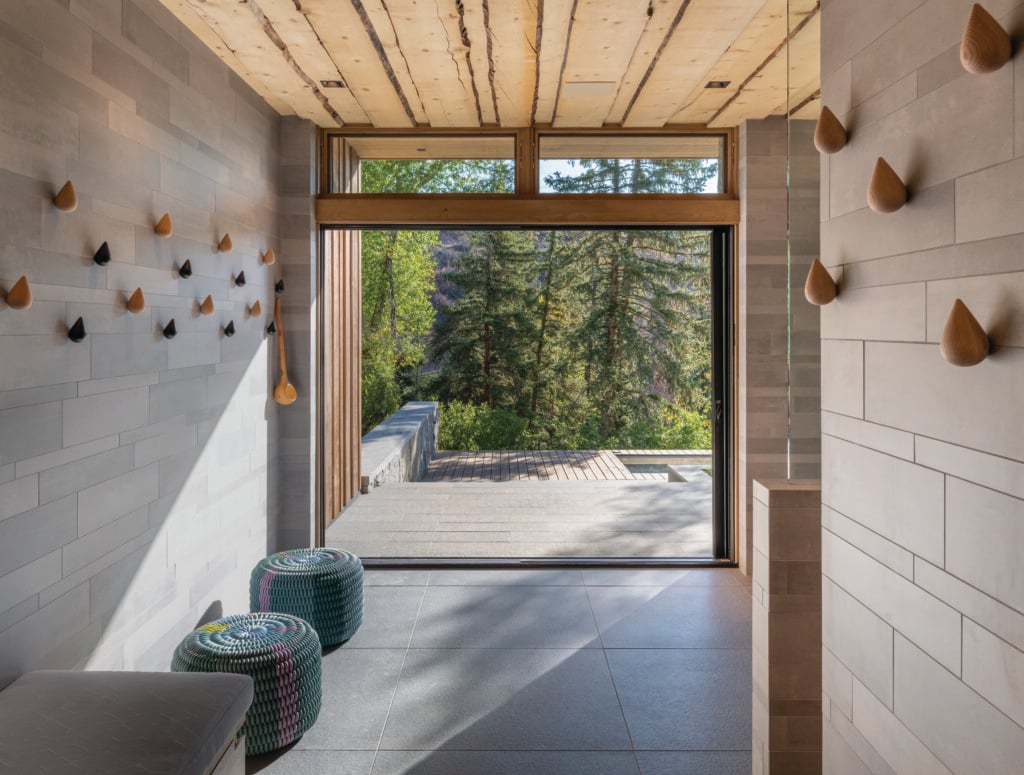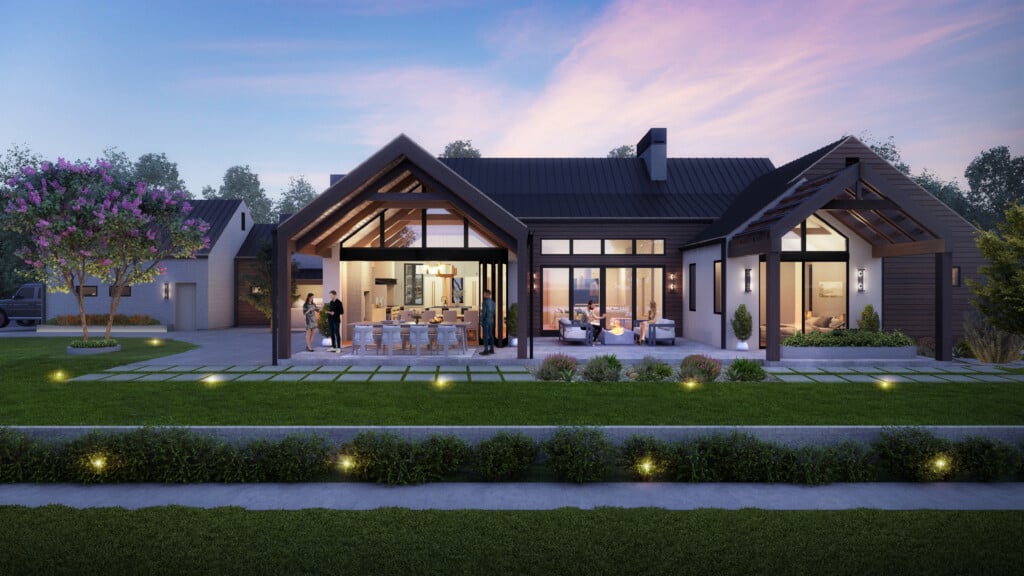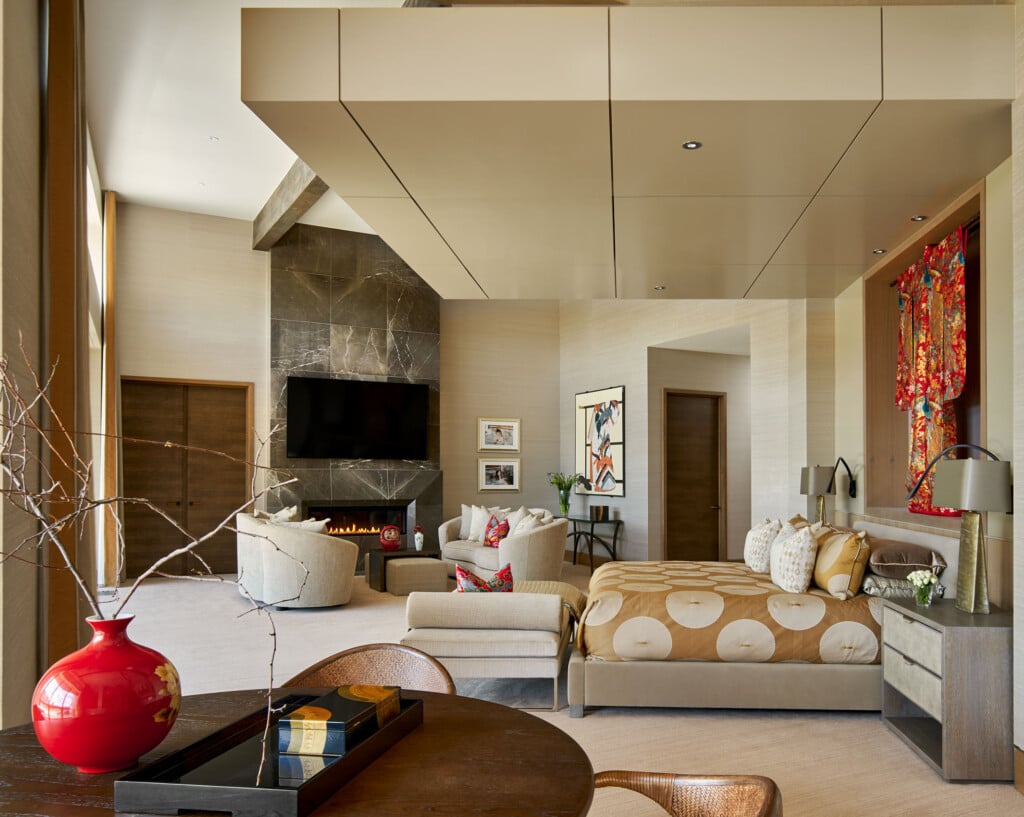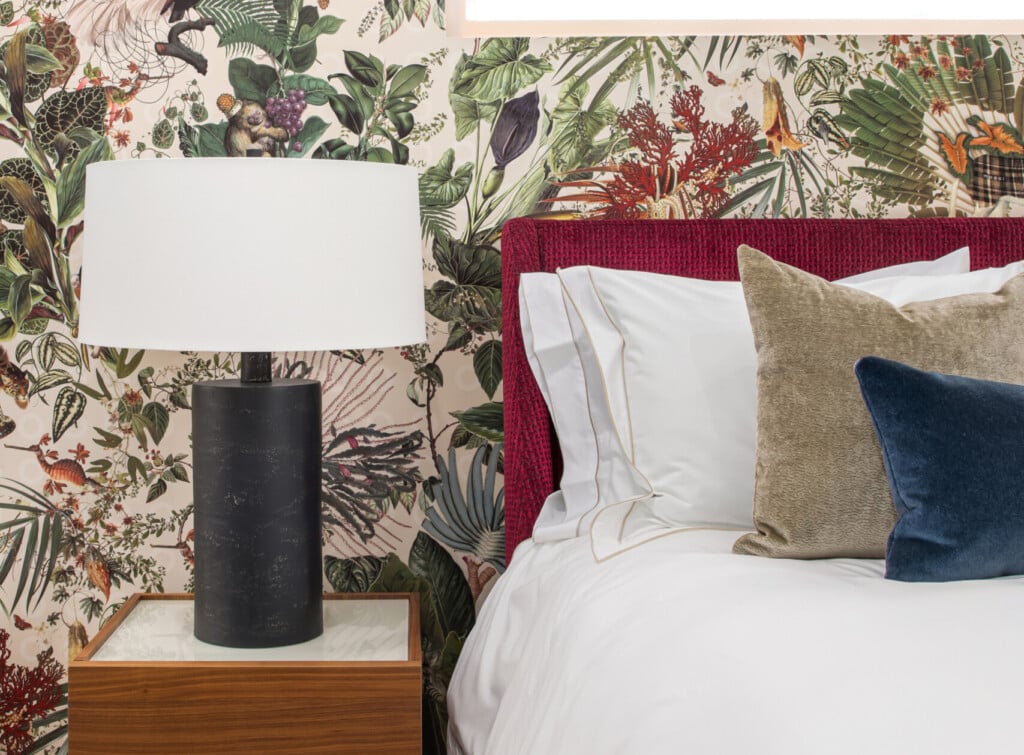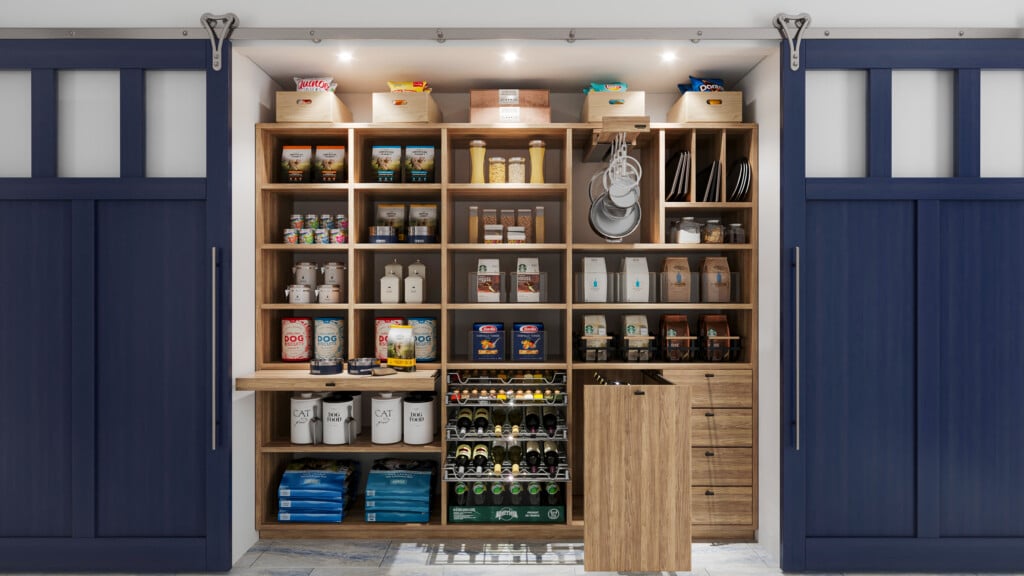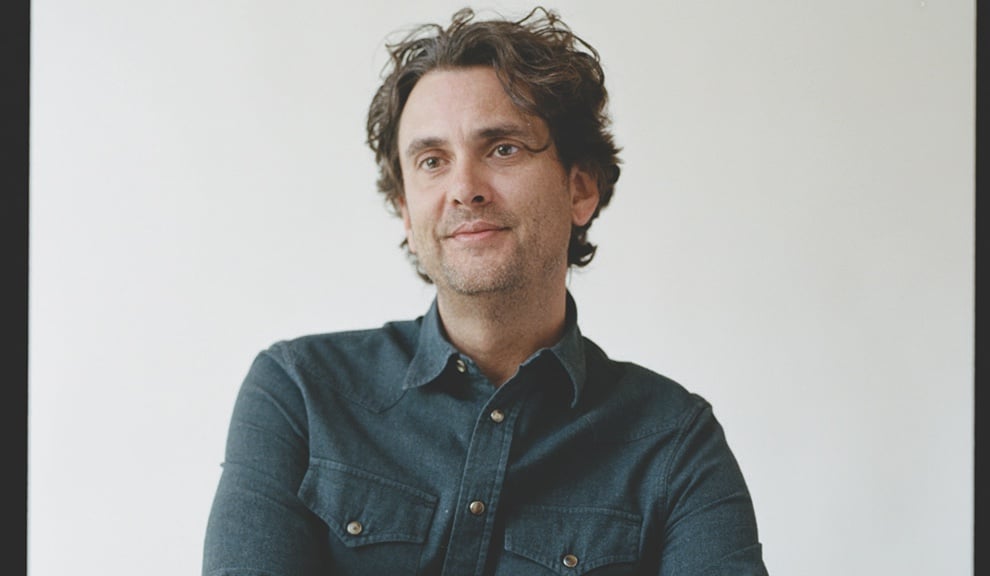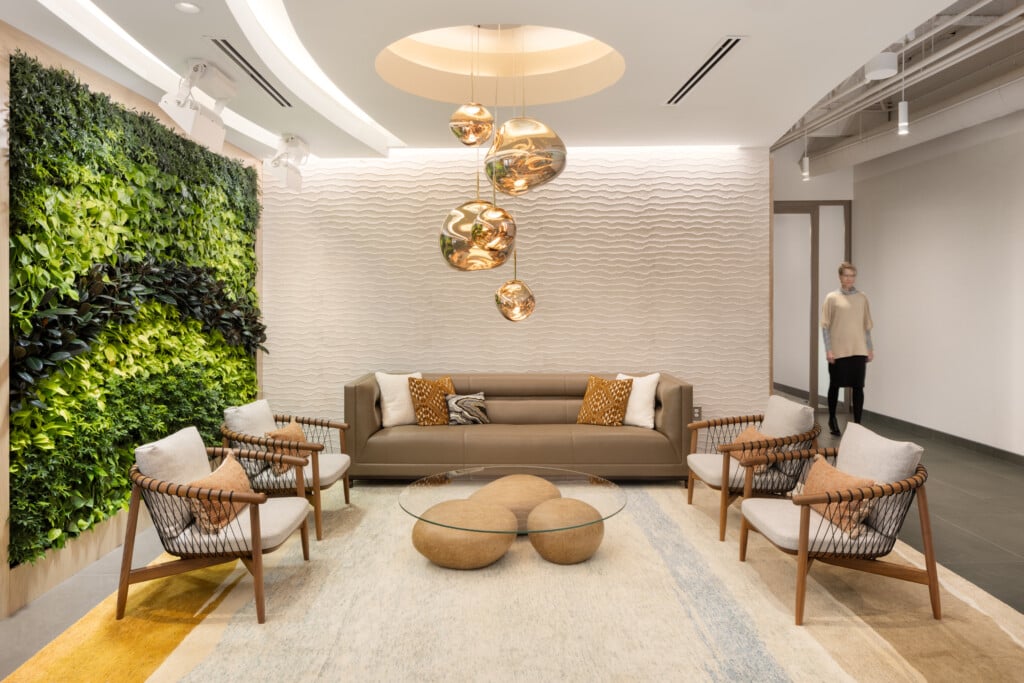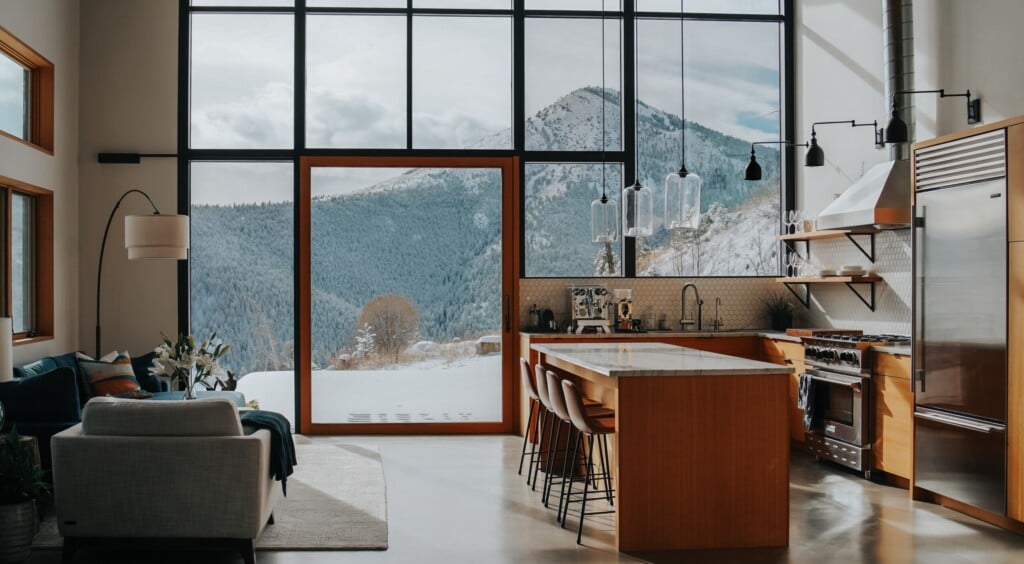2021 Circle of Excellence: Architect Todd Kennedy
Principal | CCY Architects, Basalt

Portrait by Jennifer Olson | Stool provided by Board By Design
When you’re frequently designing for mountain resorts, it helps if you’re an active outdoorsman yourself, like architect Todd Kennedy, principal at CCY Architects in Basalt. His work is a natural extension of the time he spends with his family, skiing in the winter and hiking, backpacking and mountain biking in the summer.
At CCY, which Kennedy joined in 2000 and where he is now a principal, the firm’s projects are about 50 percent single-family residential and 50 percent commercial, primarily resort amenity facilities, on-mountain restaurants and ski-school facilities.
Both kinds of work inform the other. “Our hospitality or resort work is really influenced by our single-family work, and vice versa. We think of our mountain resort restaurants and hospitality projects as extensions of home for the guests, who usually have very well-crafted, well-detailed houses. We try to create intimate spaces, so the place somebody’s choosing to stay for vacation starts to feel like a home away from home.
“The homes we design, as well as the commercial projects, are geared toward families with active outdoor lifestyles,” adds Kennedy, who is also a board member of the 10th Mountain Division Hut Association. “So it helps to be able to put myself in their shoes: How does it make sense to live here? How should the mudroom and garage be organized? How can you make life seamless in terms of connecting to the outdoors? What makes our work great is that we are helping to create experiences for a family or a couple or a group of friends to get together and make memories.”
Kennedy has been interested in architecture since childhood. “My father worked in downtown Chicago, so I’d go with him and walk around the city to check out the buildings,” he says. After earning a bachelor’s in architecture in 1997 from Iowa State University (where he also pursued environmental studies), he lived for a few years in Minneapolis before moving to Colorado in 2000 to work for CCY, which has a long legacy of sustainable design. “I looked for architecture firms in mountain towns that focused on doing progressive work. Even back in 2000, what CCY was doing was progressive, and we’ve grown to be even more so as that bar of modernism has been raised throughout the state and particularly in resort communities.”
It has been 21 years since Kennedy joined CCY, where his work ranges over every kind of project. “Our work is largely focused in the western United States, but we have projects from coast to coast, and we jump at international work,” including current projects in China and Barbuda.
No matter what or where the project is, Kennedy looks for design solutions that are thoughtful, modern, contextual and practical. “I like to say that constraints on a project—whether budget or site constraints—are the foundation of a great design solution. Around the office, I am known for being pragmatic, but I think that comes out of a great consideration for clients’ budgets and schedules, and making sure that even at the earliest stages of design, we’re thinking about the challenges we may face later on.”
NURTURING GREAT IDEAS
“Great architecture doesn’t start out as an aha moment. A lot of young architects come into the profession thinking an idea is conceptualized on day one of a project, and that’s the end of it. But great architectural ideas take months of nurturing, working them through, creating a narrative that resonates with the client and connects to the site, and then thinking about the details so it all comes together into a singular package.”
COLLABORATION IN ALL THINGS
“When you first graduate from architecture school, you often have this idea of the singular architect— someone like Howard Roark of The Fountainhead who makes these great buildings all by himself. That is a myth. Nothing happens without a team behind it. Our firm takes an intensely collaborative approach, not just within our studio, but also in our design process. That means listening to two things: first, the client; and second, the site. Almost every project results from long, deep discussions with our clients, and we spend lots of time on the site trying to understand every opportunity and challenge that exists, so we can capitalize on the opportunities and turn the challenges into positives.”
CONNECTING TO PLACE
“Gammel Damm [a family retreat near Snowmass] is a great example of a house connecting to its place. We deferred to the site through a really simple, long roof that slopes with the topography. In the midst of this high, arid desert setting, there were five spruces over 100 feet tall; we sited the house to feel nestled within them, as if it was there before the trees were. Also, the house very specifically pulls apart into distinct elements: There is a main house, and to the west a sauna that is attached at the roof but detached everywhere else, so the landscape flows underneath the architectural roof form. The house really defers to the landscape.”
STAYING ALIVE
“The five principals at our firm all got into architecture to do architecture, so there is no point on a project at which our involvement wanes. Understanding that every line drawn on paper has an impact on the end aesthetic is incredibly important to a solution that feels crafted, detailed and beautiful.”
DESIGNING IN COLORADO
“The benefits to working here are obvious: beautiful locations, whether that means long-range views, short-range views or river views. And our climate is amazingly perfect. If you design a house well, you can expand your outdoor living space and enjoy how you live outside eight to nine months a year. We’re fortunate to work on some of the most spectacular pieces of property in the state—and therefore the country.




